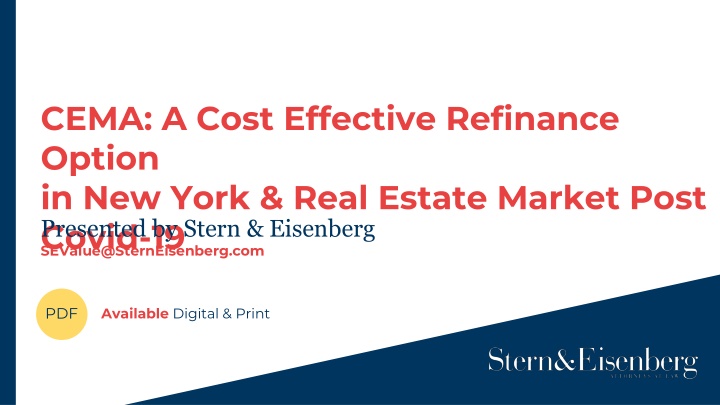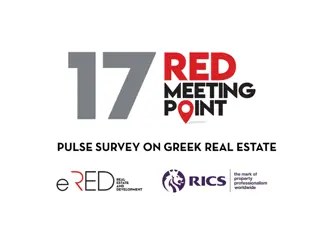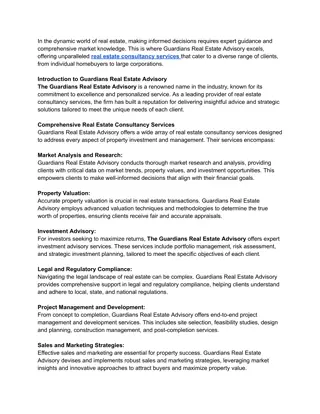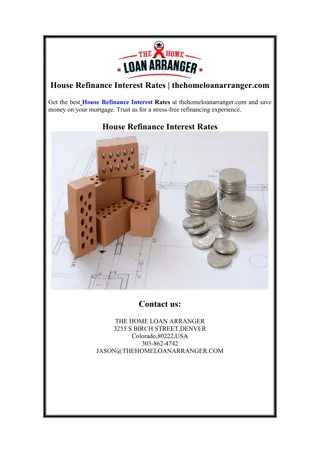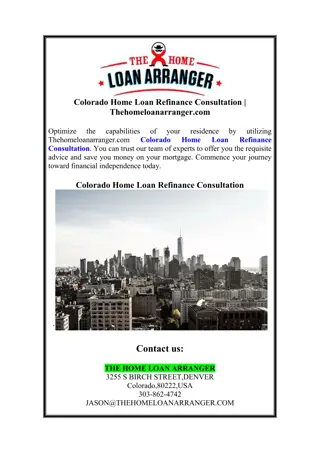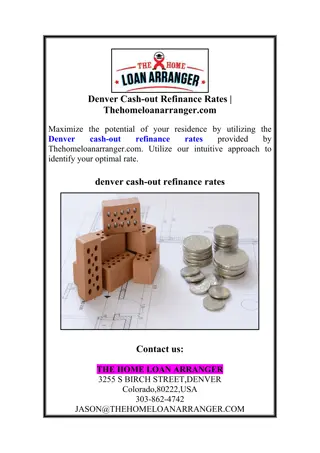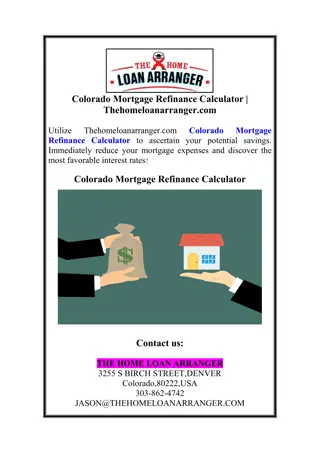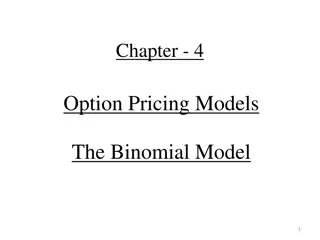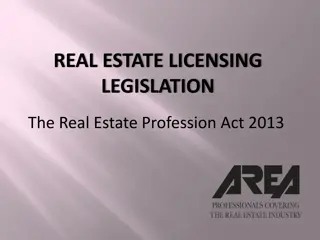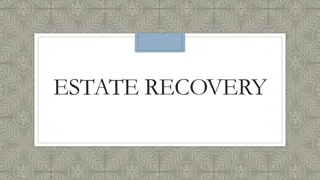Cost-Effective Refinance Option in New York Real Estate Market Post Covid-19
Consolidation, Extension, and Modification Agreement (CEMA) is a smart solution for homeowners in New York looking to refinance their properties while saving on mortgage taxes. This refinance option allows borrowers to consolidate their prior loans into a new loan amount without releasing the previous mortgages. With insights on CEMA benefits, mortgage tax rates, and refinancing statistics, homeowners can leverage this opportunity in today's low-interest rate environment.
Uploaded on Jul 15, 2024 | 4 Views
Download Presentation

Please find below an Image/Link to download the presentation.
The content on the website is provided AS IS for your information and personal use only. It may not be sold, licensed, or shared on other websites without obtaining consent from the author.If you encounter any issues during the download, it is possible that the publisher has removed the file from their server.
You are allowed to download the files provided on this website for personal or commercial use, subject to the condition that they are used lawfully. All files are the property of their respective owners.
The content on the website is provided AS IS for your information and personal use only. It may not be sold, licensed, or shared on other websites without obtaining consent from the author.
E N D
Presentation Transcript
CEMA: A Cost Effective Refinance Option in New York & Real Estate Market Post Covid-19 SEValue@SternEisenberg.com Presented by Stern & Eisenberg PDF Available Digital & Print
Stern & Eisenberg Footprint States of GSE Service New York New Jersey Pennsylvania Delaware West Virginia States with Licensed Counsel Maryland Washington, D.C. Virginia and pro hac in others
PRESENTERS Margaret Cascino, Esquire Managing Attorney New York Zachary Champion, Esquire Regional Managing Attorney REO/Retail Closings
Homeowners with equity in their property are taking advantage of today's low interest rates.
Refinance Statistics United States Mortgage Refinance Index
What is a CEMA? Consolidation, Extension and Modification Agreement. Allows a borrower refinancing his/her property to build on his/her prior loans to avoid mortgage tax. In a CEMA refinance, the prior notes and mortgages are restated in a consolidated note and mortgage in the new loan amount. The difference between a CEMA and a traditional loan is that the prior mortgages are not released when the funds pay off the prior loan. Instead, the prior mortgages remain on the property and the CEMA builds on the prior mortgages.
What is a CEMA? 2ndCEMA $200,000 Mortgage 3 $50,000 CEMA $150,000 Mortgage 2 $50,000 Mortgage 1 $100,000
Why use a CEMA? Mortgage tax in NYC - 1.8% under $500,000 (2.05% with lender's .25%) and 1.925% (2.175% with lender's .25%) above $500,000 (plus .25% due from lender unless the lender is a Federal Bank then the .25% is paid by the borrower) - minus $30 statewide exemption where mortgage tax in the county is more than 1%) New York State recording tax is 0.5% No mortgage tax on co-ops since you are buying shares not real property
What is a CEMA? 2ndCEMA $200,000 mortgage tax $995 Mortgage 3 $50,000 CEMA $150,000 mortgage tax $995 Mortgage 2 $50,000 Mortgage 1 $100,000 mortgage tax $2,020
Lets walk through the traditional CEMA form Includes standard terms, including borrower, lender and property information Recites an agreement to combine all notes and mortgages Lender and I are combining into one set of rights and obligations all of the promises and agreements stated in the Notes and Mortgages including any earlier agreements which combined, modified or extended rights and obligations under any of the Notes and Mortgages. Includes a consolidated note that provides
Lets walk through the traditional CEMA form EXHIBIT A Lists all Notes & Mortgages being consolidated EXHIBIT B Legal description on the property EXHIBIT C Copy of Consolidated Note EXHIBIT D Copy of Consolidated Mortgage
THE PROCESS Loan is "paid off" but no lien release issued Closing occurs - original collateral is transferred to new lender Collateral file received -- allonge to note(s) and assignment(s) of mortgage(s) prepared Clear-to-close issued New lender obtains title report to make sure property is clear of liens The existing lender requests the original collateral file from the custodian Once approved, borrower submits a request to the existing lender Borrower submits a loan application for a refinance The Process
Delays/Issues Custodian delays in providing the original collateral file. 3-12 weeks depending on the custodian. Impact on rate lock expiration/extension issues. Lost notes -- have old lender prepare a lost note affidavit Missing original mortgages - certified copies need to be obtained from county clerk's office for closing Erroneous satisfaction of mortgage issued by prior lender in connection with earlier refinance
Stern & Eisenberg COVID-19 Closing Protocols
SERVICES Q& A CREDITORS RIGHTS REAL ESTATE LAW LITIGATION BUSINESS LAW REO CLOSINGS BANKRUPTCY COMMERCIAL LAW CORPORATE LAW With your session presenter and other Stern & Eisenberg team members present. Contact SEValue@SternEisenberg.com for future trainings online and in person.
